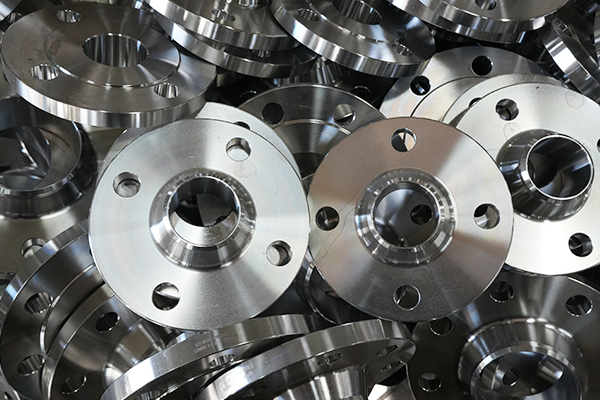NewsDetails
A Guide to Avoiding Pitfalls in Seamless Steel Pipe Procurement: The Precise Matching Rules for Wall Thickness, Material, and Specifications
author:Zhantong time:2025-06-12 18:03:41 Click:100
In industrial construction and equipment manufacturing, the quality of seamless steel pipe procurement directly impacts engineering safety, cost control, and service life. However, the market is flooded with products of varying quality, and common pitfalls include blindly pursuing low prices and neglecting specification matching. This article systematically analyzes the key points of procurement from the three core dimensions of wall thickness, material, and specifications, helping you avoid traps and achieve precise selection.
I. Introduction: The Critical Importance of Selecting the Right Seamless Steel Pipes
As a fundamental material in the industrial sector, the selection of seamless steel pipes not only affects the performance of individual equipment but also has a cascading effect on the stability of the entire engineering system. Incorrect procurement decisions, such as choosing pipes with insufficient wall thickness, can lead to pressure-bearing failures, while mismatched materials can easily trigger corrosion and leaks. This article will provide a scientific guide to avoiding pitfalls in procurement, focusing on the three core elements of wall thickness, material, and specifications.
II. Guide to Avoiding Pitfalls in Wall Thickness Selection
(1) Impact of Wall Thickness on Performance
Wall thickness is a key factor determining the pressure-bearing capacity and deformation resistance of seamless steel pipes. Thicker pipe walls enhance the ability to withstand internal pressure and external loads, making adequate wall thickness essential for safe operation in high-pressure transportation and heavy machinery support scenarios. Meanwhile, different operating conditions have significantly varying requirements for wall thickness: high-pressure oil and gas transportation emphasizes pressure resistance, while precision components in machinery manufacturing require a balance between strength and weight.
(2) Common Misconceptions in Wall Thickness Selection
Some users mistakenly believe that "thicker is always better," unaware that excessive wall thickness not only significantly increases costs but also complicates installation due to increased weight. Additionally, some products on the market may falsely label wall thickness, with actual thicknesses not matching stated values. Without rigorous testing, this can easily pose safety hazards.
(3) Wall Thickness Testing and Matching Methods
During procurement, use tools such as calipers or ultrasonic thickness gauges to measure the actual wall thickness of the steel pipes. In terms of selection calculations, derive reasonable wall thickness values using general formulas based on the pipe's operating pressure and diameter, and verify them against industry standards to ensure the selected products meet actual operating conditions.
III. Guide to Avoiding Pitfalls in Material Selection
(1) Material Characteristics and Application Scenarios
Carbon steel, alloy steel, and stainless steel are common materials for seamless steel pipes, each with distinct performance characteristics: carbon steel is cost-effective and high in strength but lacks corrosion resistance; alloy steel enhances overall performance through the addition of alloy elements, suitable for complex operating conditions; stainless steel, with its excellent corrosion resistance, is the preferred choice for the chemical and food industries. Additionally, special materials such as weathering steel and duplex steel can specifically meet the stringent requirements of marine and highly corrosive environments.
(2) Common Fraudulent Practices in Material Selection
Some unscrupulous merchants may pass off ordinary carbon steel as alloy steel or stainless steel or cut corners on material composition, resulting in substandard alloy element content and significantly reduced pipe performance. Such inferior products may not reveal issues in the short term but can drastically shorten equipment lifespan over time.
(3) Material Identification and Verification
Preliminary identification can be achieved by observing the surface color and texture of the steel pipes to determine material authenticity. For precise verification, professional methods such as spectral analysis and metallographic testing are required to conduct in-depth detection of chemical composition and internal microstructure, ensuring the material meets procurement requirements.
IV. Guide to Avoiding Pitfalls in Specification Selection
(1) Core Dimensions of Specification Parameters
The specifications of seamless steel pipes are determined by pipe diameter and wall thickness, which must be synergistically matched to achieve optimal performance. Meanwhile, different industries have significantly varying requirements for specification precision: the machinery manufacturing sector often has strict tolerance range requirements to ensure precise fit between components, while scaffolding pipes in construction focus more on strength and versatility.
(2) Common Errors in Specification Selection
Neglecting actual operating conditions and randomly selecting specifications can lead to pipes unable to bear designed loads, resulting in engineering rework. Conversely, overly conservative selection, choosing significantly larger specifications than needed, can cause unnecessary cost waste and reduce project economy.
(3) Scientific Selection Process
Before selection, comprehensively analyze operating parameters, including operating pressure, medium characteristics, and temperature range. Then, refer to national standards and industry specifications to clarify key technical indicators and cross-check them with the supplier's product parameter sheets to ensure scientific and reasonable specification selection.
V. Comprehensive Strategies to Avoid Pitfalls in Procurement
(1) Key Points in Supplier Screening
Prioritize suppliers with complete qualifications and good reputations, verifying their compliance by checking production licenses and quality certification documents. Additionally, refer to market reputation and past cooperation evaluations, and if necessary, request samples for pre-testing.
(2) Contract and Acceptance Specifications
When signing procurement contracts, include key information such as material, specifications, and execution standards in detail in the clauses and clarify breach of contract responsibilities. During acceptance, strictly conduct sampling tests on the steel pipes according to contract requirements to ensure consistency with agreed standards.
(3) Balancing Cost and Quality
Within the budget, prioritize meeting core performance requirements to avoid sacrificing quality for excessive cost reduction. Cost control can be achieved while ensuring quality by optimizing procurement channels and placing bulk orders.
VI. Conclusion
The procurement of seamless steel pipes should focus on wall thickness, material, and specifications, comprehensively considering performance requirements, cost budgets, and safety standards. By avoiding common pitfalls and mastering scientific selection methods, you can choose suitable products and lay the foundation for the stable operation of engineering and equipment. With the continuous development of new materials and processes, procurement standards will also continue to evolve. It is advisable to stay informed about industry trends and feel free to leave comments to exchange selection experiences and queries.
 Recommended Products
Recommended Products
 Contact us
Contact us
—— Contact:Manager
—— Tel:+86 15231788966
—— Email:info@zhantongpipe.com
—— Url:https://www.zhantongpipe.com
—— Address:Mengcun Hui Autonomous County, Cangzhou City, Hebei Province









